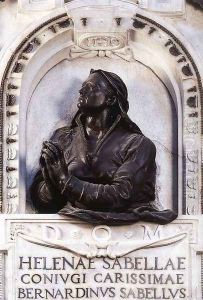Jacopo del Duca Paintings
Jacopo del Duca, an Italian sculptor and architect of the Renaissance era, was born around 1520 in Cefalù, Sicily. He is often remembered as a collaborator and follower of the great Michelangelo Buonarroti. Jacopo's early life is not well documented, but it is known that he was active in Rome by the mid-16th century, where he was influenced by the work of Michelangelo and other prominent artists of the time.
Del Duca's sculptural work was characterized by a strong sense of form and detail, which he combined with a deep understanding of classical sculpture. This is evident in his various works, such as the tombs he created, which often featured figures in serene, contemplative poses. He also worked on architectural projects, including assisting Michelangelo with the construction of the Basilica of St. Peter in Rome.
In 1550, Jacopo del Duca was involved in the completion of the Chapel of Santa Maria degli Angeli, where he executed some sculptures based on Michelangelo's designs. His other notable works include the bronze doors of the Cappella del Sacramento in St. Peter's Basilica and several statues within the church. Throughout his career, del Duca maintained a style that was heavily influenced by Michelangelo, yet he also incorporated his own artistic sensibilities and the emerging mannerist style of the late Renaissance.
Later in his life, Jacopo returned to Sicily where he continued to work on various projects, including the design of churches and urban planning in his native city. He was also responsible for spreading Renaissance ideas and Michelangelo's influence to Sicily, which was somewhat isolated from the artistic developments taking place in central Italy.
Jacopo del Duca's death occurred in 1604. Though not as widely known as some of his contemporaries, his work represents an important link between the High Renaissance and the Mannerist styles, and he played a crucial role in disseminating the Renaissance aesthetic beyond the traditional cultural centers of Italy.
